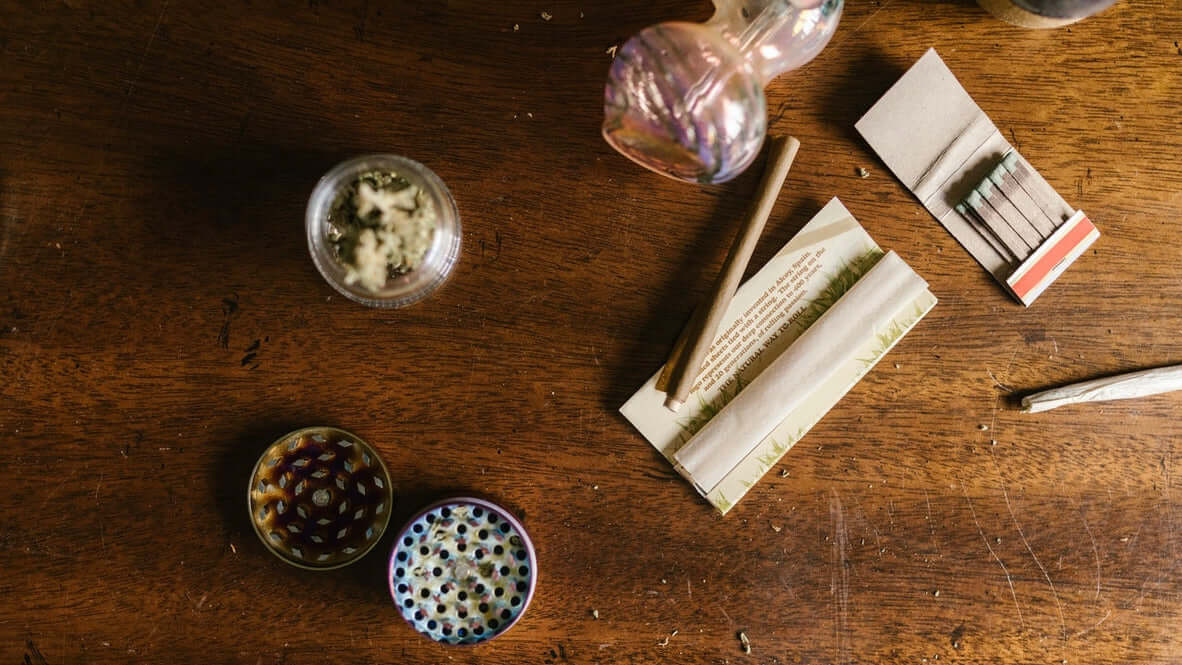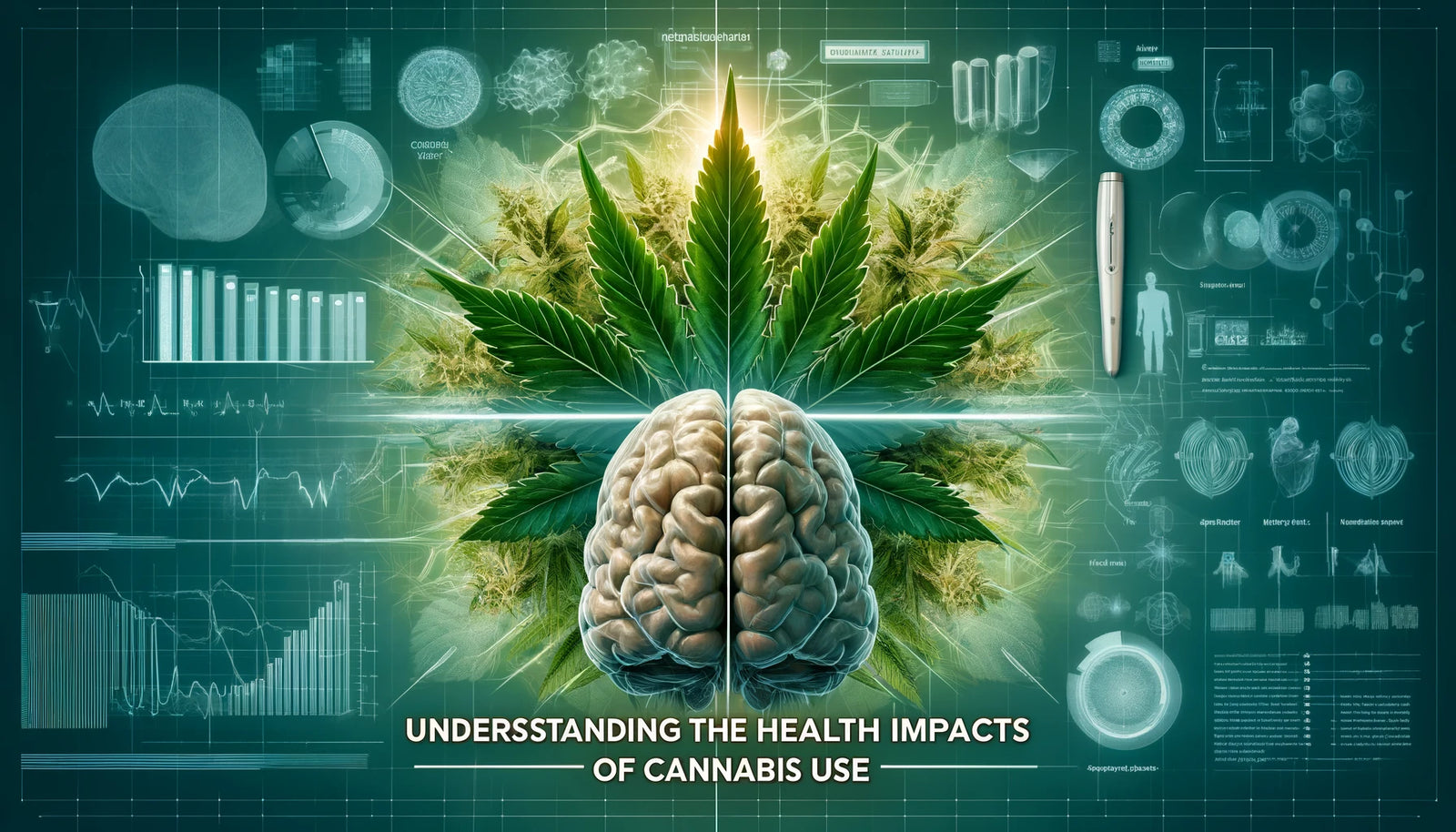Your Cart is Empty
🛳️ AHOY! Now accepting Credit Cards & Bank Transfers (EU no fees) 💳💶
🛳️ AHOY! Now accepting Credit Cards & Bank Transfers (EU no fees) 💳💶
Shop
12 Different ways to smoke Cannabis
October 13, 2021 5 min read

12 Different ways to smoke Cannabis
When it comes to cannabis consumption, the second-most important consideration, after the flower itself, is the delivery method. This point is often overlooked, as evidenced by the prevalence of consumers who have limited their experimentation to only one or two methods. If you find yourself within this category but aspire to become a comprehensive cannabis aficionado, let this be your checklist. Gaining the mental and physical benefits of cannabis is largely dependent upon how it’s consumed, with each method providing a unique experience and host of effects. Who knows — you could find a new favorite. Let the exploration begin!
Water Pipes
Water pipes come in slightly different variations, including but not limited to bongs and bubblers. Like hand pipes, these come in a variety of styles and designs but increase in sophistication by incorporating water. The health benefits associated with the addition of water are up for debate: water cools the smoke, but it’s uncertain whether it acts as an effective filter for harmful constituents.
Rolling Papers for smoking cannabis
Generally, these are used to smoke joints or blunts. Joints are cannabis rolled in a paper, the composition of which varies across an assortment of plants including but not limited to hemp, bamboo, and rice. Blunts are cannabis rolled in cigar paper made from the tobacco plant and contain nicotine. Blunt consumers often prefer the flavor and combined effects of the nicotine and cannabis; however, the medical risks linked to nicotine deter most health-conscious cannabis consumers.
Homemade One-Time Use Devices
This method may allow for the greatest creativity and includes all disposable cannabis smoking devices. The most common homemade device is a pipe due to its simplicity, but skilled crafters have taken on water pipe designs as well. Health effects associated with this method are equally variable depending on the material and method used for assembly.
Vaporization
Vaporizers are the logical choice for moderate to experienced and/or health-conscious cannabis consumers. A vaporizer steadily heats herbs to a temperature that is high enough to extract THC, CBD, and other cannabinoids, but the temperatures are too low for the potentially harmful toxins that are released during combustion. Essentially, vaporization minimizes the health risks associated with smoking. This improvement comes with an equally significant reduction in odor, which is generally the first acknowledgement of first-time vaporizer users. There is a diverse landscape of vaporizer models and the market is only expanding as the technology improves.
Oral Delivery Methods
Oral delivery includes all techniques that are administered through the mouth, including tinctures, ingestible oils, and infused food/drinks. We most often assume that oral delivery denotes ingestion through the digestive tract before entering the bloodstream, but this is not always the case. Tinctures are essentially a topical application that is administered through the mouth, and they are immediately absorbed into the bloodstream unlike edibles or drinks.
Ingestible Oils
Ingestible oils are a happy medium between edibles and concentrates: they are swallowed and digested like an infused product, but often have the consistency of oil. These oils can either be eaten or put in easily-ingested capsules. One popular oil is Rick Simpson Oil (RSO), which originated in 2003 when Simpson used concentrated cannabis to treat his skin cancer. RSO is made by extracting the therapeutic compounds of cannabis with alcohol and then evaporating the solvent, leaving behind a tar-like substance resembling oil.
Edibles
Eating or drinking cannabis provides significantly different effects from delivery methods that immediately enter the bloodstream, such as smoking or vaping. Edibles can be defined as any food that contains cannabis, whether or not the cannabinoids are bioavailable. These products have longer onsets and tend to cause powerful full-body, psychoactive effects.
Infused food and drinks can be made a variety of ways depending on the dish. Most often, edibles are infused with a staple infused ingredient high in fat — like butter or olive oil — that enable extraction of the plant’s therapeutic properties. Adding tinctures to dishes is another great option for dosage control and simplicity. Generally, cooking with cannabis flower can be difficult because of the complication associated with cannabinoid activation (including sensitive heating temperatures and times, and sufficient solvent fat). However, as the prevalence of cannabis grows, so does the presence of flower in the kitchen.
Topical Delivery Methods
Topical cannabis administration utilizes full cannabis extract — a thick oil that has been decarboxylated to activate cannabinoids. Once cannabinoids are activated, they can be absorbed through your skin.
Topical effects differ from other medicating methods in that they don’t provide the cerebral stimulation that users describe as “being high.” Because of this, topicals are appropriate for consumers needing a clear head and localized relief (for example, muscle aches or soreness).
Tinctures
Tinctures are a liquid cannabis extract used by consumers looking for dosage control and fast-acting effects without the health risks associated with smoking. Most commonly, alcohol is used as the solvent (any proof greater than 80 can be used effectively), but other fat-soluble liquids can be used as well, such as vinegar or glycerol. Generally, three or four drops of the tincture are placed under the tongue, where it’s absorbed into the body versus swallowed and digested. When ingested, tinctures are immediately absorbed in an empty stomach but require time to process through the liver, reducing dosage control.
Dabbing
A younger delivery method that is a point of contention amongst the cannabis community and attentive policy makers is dabbing. Dabbing is a form of vaporization in which potent cannabis concentrates are dropped on a heated nail, creating vapor that is trapped in a glass globe and inhaled. Although there are obvious health benefits associated with clean concentrates over combustible flower, concerns arise from dabbing’s image and the intense effects of high-THC extracts.
Hookahs
This is one of the less common methods of smoking cannabis and is generally associated with smoking shisha, the American term for wet tobacco. Cannabis is rarely smoked alone in a hookah because its low water content causes the plant to burn faster than it can be inhaled, producing an acrid taste and wasting the herb. For economically-conscious smokers, this is likely the prominent concern as large quantities of cannabis are needed to yield the same results as other smoking methods.
To resolve this, cannabis is sandwiched between tobacco, introducing the same health concerns associated with blunts. However, the hookah does allow multiple people to smoke at the same time, significantly changing the smoking experience.
Hand Pipes
These are probably the most common smoking device in circulation today and generally favored for their convenience: they are small, portable, and simple to use. Hand pipes have grown into an artistic expression and are available in countless creative forms and styles, both for decoration and functionality (such as disguise pipes that imitate everyday objects). Hand pipes operate by trapping the smoke produced from burning cannabis, which is then inhaled by the user.
Leave a comment
Comments will be approved before showing up.
Also in The Captain's Blog

Spain | Finding and contacting Cannabis Social Clubs in all regions
August 26, 2024 6 min read
Are you looking for Cannabis Social Clubs in Spain? This article aims to provide you with information on how to find Cannabis Social Clubs in Spain with various approaches. We also provide a list of all public club-registries currently online.
Read More
The Future of Cannabis Legalization in Europe
April 14, 2024 10 min read
Explore the future of cannabis legalization in Europe in this informative blog post. Our expert analysis covers the economic benefits, regulatory framework, and social implications of cannabis legalization, as well as the current state of cannabis laws in Europe. With detailed statistics and real-world examples, this post provides valuable insights for anyone interested in the future of cannabis in Europe.
Read More
The Negative Health Effects of Cannabis
April 14, 2024 2 min read
This article provides an in-depth look at the multifaceted health effects of cannabis, covering everything from psychological and neurobiological impacts to dependency, addiction, and its influence on respiratory and cardiovascular health. With insights into the latest studies and expert opinions, understand the complexities surrounding the use of cannabis and its implications on human health.
Read More❗El Capitan does not promote or encourage cannabis consumption.❗
Subscribe
Sign up to get the latest on sales, new releases and more …

